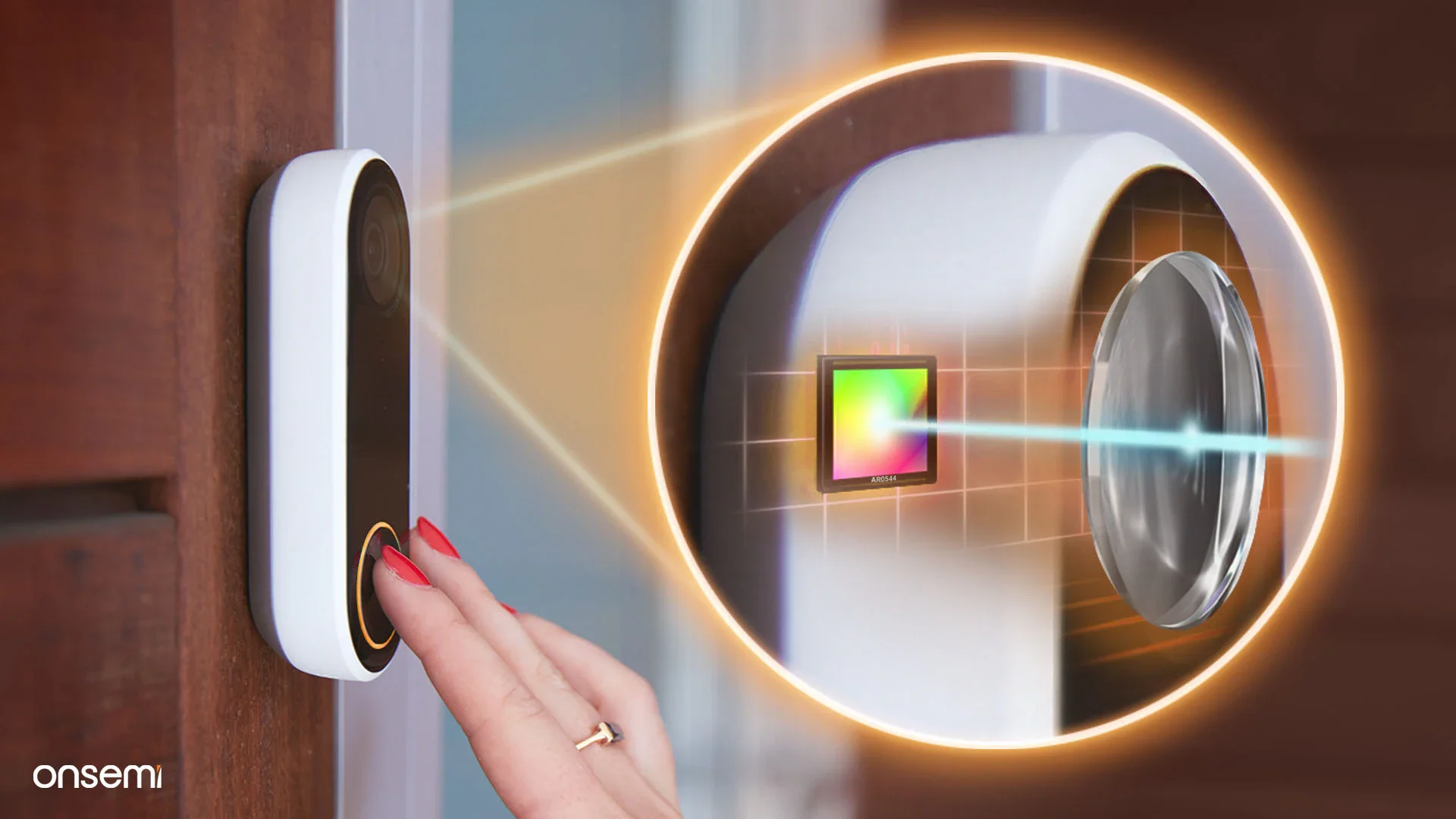We live in a world that’s awake 24/7. Whether it’s a motion-detecting doorbell or a surveillance camera running throughout the night, image sensors play a crucial role in our modern world by providing important technology for our vision systems.
Recently, onsemi introduced a new product family of image sensors – Hyperlux LP. In this blog, we interview Ganesh Narayanaswamy, Product Line Management from onsemi to get a closer look at the Hyperlux LP image sensors, their capabilities, and the benefits delivered by these sensors to vision systems.
Questions:
- onsemi has officially introduced the Hyperlux LP image sensors. Can you explain what this product family represents and the sensors that are included?
Ganesh Narayanaswamy : The Hyperlux LP image sensor product family from onsemi is comprised of the next generation Electronic Rolling Shutter products. The family includes 3 product lines – AR0544 with 5MP resolution, AR0830 with 8.3MP resolution, and AR2020 with 20MP resolution. All members of the Hyperlux LP family have the same pixel size and optical performance.
These product lines are made up of multiple variants providing a wide array of solutions for multiple applications. They offer mono, RGB & RGBIR variants both in packaged and die forms. The breadth of offerings provides vision system designers a comprehensive product family that minimizes the product development effort with the ability to leverage the solutions realized with one variant in others, low development costs and shortened Time-to-Market (TTM).
2. What differentiates Hyperlux LP sensors from other low-power image sensors in the market?
Ganesh Narayanaswamy: Hyperlux LP sensors are differentiated by power consumption and architecture.
Power Consumption
Power consumption in high-power devices poses a significant challenge amongst electronic products, both in terms of power delivery and the ability to manage the heat that they generate. These power consumption challenges in electronic devices/systems have led to mandated EPA.
Hyperlux LP Differentiated Functions
The Hyperlux LP product family is specifically architected and designed for low power consumption. To further silicon architecture, these sensors also have purpose-oriented functions like Wake On Motion (WOM) and SmartROI that are extremely handy in various industrial and commercial applications. These functions enable the operation of the Hyperlux LP sensors to tradeoff between bandwidth and power, and vision systems using these sensors can operate in significantly low power modes. Traditional sensors lack these features, require expensive power electronic components and (electronic) real estate, and deliver sub-optimal image quality.
3. How do Hyperlux LP sensors enhance end products or applications?
Ganesh Narayanaswamy: Image sensors as data-capturing devices have traditionally been doing just that – capturing data and transferring it to the following devices in the datapath. The processing of this data as applicable to the application/use case has been a significant burden on the rest of the devices in the datapath, making the vision system highly inefficient and/or costly.
Benefits of Hyperlux LP Built-in Functions
The built-in functions of Hyperlux LP sensors extend the low-power and high-performance characteristics further. They take the load off the Image Signal Processor (ISP)/System on a Chip (SoC) that interfaces with the image sensor by pre-processing the image data to deliver application-specific output, and through multiple subsampling modes. This enables vision system designers to make optimal choices on ISP/SoC, reduce power consumption, increase overall performance, and reduce overall TCO.
The low power consumption of these image sensors is particularly beneficial in multi-sensor, and battery-powered vision systems. Being able to remove 300mW ~ 500mW from the system contributes significant differentiation to the end product. Battery-powered products such as video doorbells can now have a reduced number of charge cycles thus increasing the reliability of their operation.
Poor image quality causes the processing engines to spend more cycles on the received data, thus increasing their power consumed or slowing down the overall system performance. Hyperlux LP sensors help to alleviate these impacts as they, by their enhanced silicon and pixel architecture, deliver an image quality that is substantially superior to other offerings available and enhance the overall vision system’s efficiency. Conventional Neural Networks (CNNS) can now train faster and infer faster thereby making vision systems deployable in critical reaction applications.
onsemi is the technology leader in sensing and continues to contribute significant innovations to vision systems solutions. The new Hyperlux LP family has incorporated considerable features that bring overall high value to end products. With the addition of Hyperlux LP sensors, vision system designers can differentiate their products by addressing a wide variety of applications targeting access, biometrics, surveillance and security, industrial automation, public & civic safety and videoconferencing functions. The unique features address the challenging performance and power requirements demanded by these applications.
For further information, please visit our product pages, AR0544, AR0830, and AR2020.
Additional Resources:
_____________________________________________________________________________________________________________________
About Ganesh Narayanaswamy
Ganesh Narayanaswamy is responsible for the image sensors product line & business management in the Industrial & Commercial Sensing Division (ICSD) at onsemi. He focuses on bringing vision solutions to the commercial & industrial markets, and the business growth in multiple geographical regions. Ganesh joined onsemi from Xilinx where he managed the Industrial Vision and Electric Drives businesses globally. Prior to that, he managed the Networking ASICs business at Avago and at ST Microelectronics, led the product marketing efforts for Structured ASICs at Altera, and designed/developed multiple devices at National Semiconductor. Ganesh holds an MBA from Santa Clara University and a MS(EE) from Mississippi State



